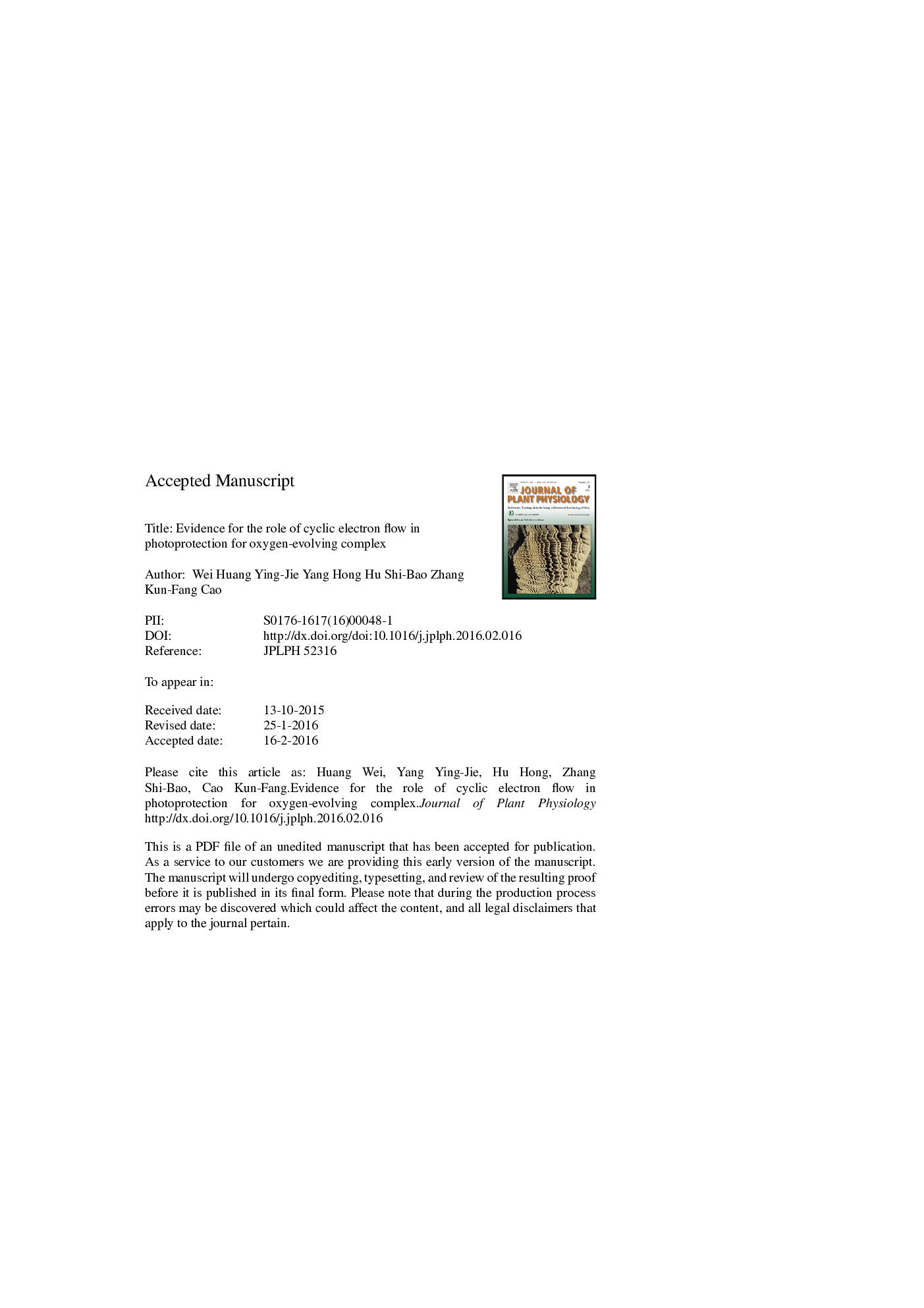| Article ID | Journal | Published Year | Pages | File Type |
|---|---|---|---|---|
| 8387218 | Journal of Plant Physiology | 2016 | 27 Pages |
Abstract
Cyclic electron flow (CEF) alleviates PSII photo-inhibition under high light by at least two different mechanisms: one is liked to thermal energy dissipation (qE) and the other one is independent of qE. However, the latter mechanism is unclear. Because the photodamage to PSII primarily occurred at the oxygen-evolving complex (OEC), and the stability of OEC is dependent on proton gradient across thylakoid membrane (ÎpH), we hypothesize that the CEF-dependent generation of ÎpH can alleviate photodamage to OEC. To test this hypothesis, we determined the effects of antimycin A (AA), methyl viologen (MV), chloramphenicol (CM), nigericin (Nig) on PSII activity and the stability of OEC for leaves of a light-demanding tropical tree species Erythrophleum guineense by the analysis of OKJIP chlorophyll a fluorescence transient. After high light treatment, the stronger decrease in Fv/Fm in the AA-, CM-, MV-, and Nig-treated samples was accompanied with larger photo damage of OEC. The AA-treated samples significantly showed lower CEF activity than the H2O-treated samples. Although the AA-treated leaves significantly showed stronger PSII photo-inhibition and photo-damage of OEC compared to the H2O-treated leaves, the value of non-photochemical quenching did not differ between them. Therefore, CEF activity was partly inhibited in the AA-treated samples, and the stronger PSII photo-inhibition in the AA-treated leaves was independent of qE. Taking together, we propose a hypothesis that CEF-dependent generation of ÎpH under high light plays an important role in photoprotection for the OEC activity.
Keywords
Related Topics
Life Sciences
Agricultural and Biological Sciences
Agronomy and Crop Science
Authors
Wei Huang, Ying-Jie Yang, Hong Hu, Shi-Bao Zhang, Kun-Fang Cao,
